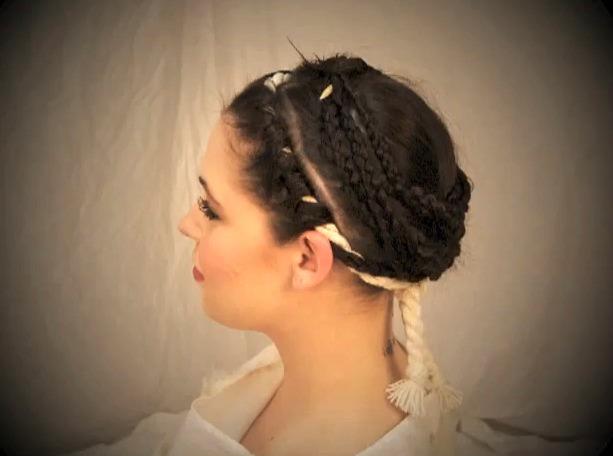picture credit Janet Stephens
The complex hairstyle worn by Ancient Rome’s Vestal Virgins has been recreated for the first time.
According to ‘Live Science’, hairdresser and amateur archaeologist Janet Stephens presented her finding at the annual meeting of the Archaeological Institute of America held in Seattle. The Vestal Virgins were priestesses of the goddess of the hearth of the ancient city of Rome, Vesta.
The six priestesses took a vow of chastity and were tasked with keeping the sacred fire of Vesta burning at the College of the Vestals in Rome. If the fire extinguished, Romans believed the goddess had withdrawn her protection from the city and the state.
Apart from the emperor’s wife, the Vestal Virgins were the most important women in Rome. Their status was reflected in their clothing and hairstyle. The priestesses’ braided hairstyle, the sini crenes (six tresses), symbolised chastity and was also worn by brides.
Stephens deduced how the priestesses wore their hair by studying two busts of Vestal Virgins, one of which is in Florence’s Uffizi Gallery. It was no easy feat given that statues of the Vestal Virgins show them wearing layers of ceremonial headwear: the turban-like infula (fillet of wool) coiled around the head at least five times, the vita (woollen cord) and the suffibulum (pinned below) short veil fastened at the breast with a fibula (brooch).
She worked out how the hairdo was created by following the woven patterns of the braids. Stephens concludes that the priestesses’ hair would have been separated into sections and woven into six braids. Hair at the frontal hairline was wrapped around a vita cord. Any loose hair formed a seventh braid. The braids were then secured to the back of to the head by a complicated technique using knotting and coiling.
Stephens recreated the hairstyle on a live model in approximately 40 minutes using implements and methods that the Romans would have used. The priestesses are likely to have had slaves to do their hair.













